When you plan to aquascape your aquarium, driftwood is one of the best additions you can think of as it adds beauty to an aquarium. It also adds striking features alongside wood, rocks, and stones in freshwater aquariums. It can be found on the seashores of a beach, lake, or river. When designing your aquascape, you need to note that not every type of wood can be used as aquarium driftwood, so, choosing the right wood is preliminary to a well-shaped and beautiful aquarium.
Driftwood can create an intense eye-catching visual for your aquarium and has many advantages for the tank’s species, but it needs to be always protected and crafted underwater; otherwise, it may cause the discoloration of water. It is a broadly used component for the decoration of freshwater aquarium and creates a beautiful scenery for your aquarium along with stones, rocks and plants. However, you may need to prevent your freshwater from being polluted as it will decay your driftwood rapidly.
There are several types of driftwood available in the market. It can be a hassle to choose the right one. Therefore, we will discuss the common types of aquarium driftwood and how and where to buy them.
1. Bonsai Driftwood
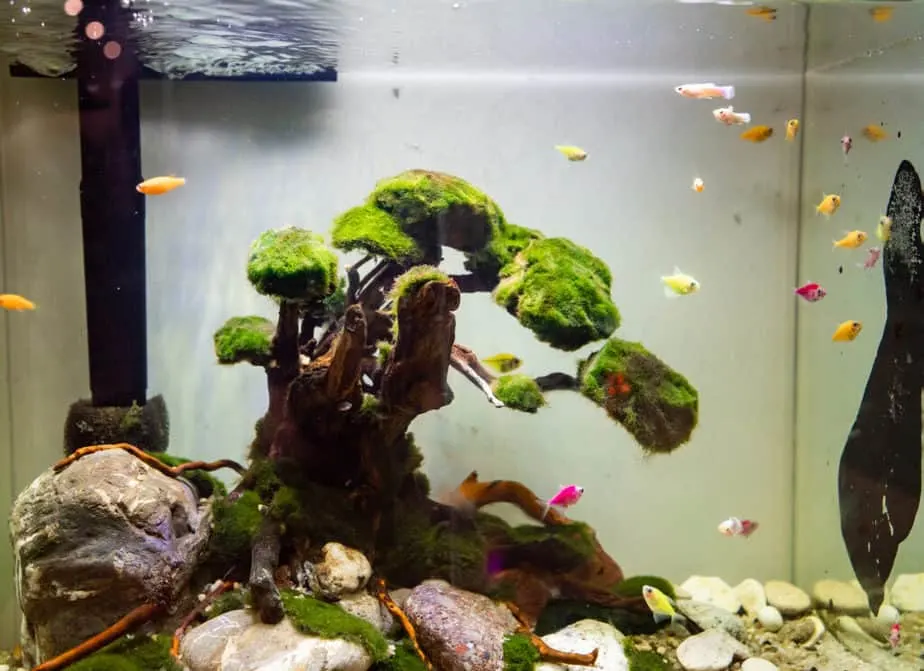
Bonsai Driftwood is any natural driftwood handcrafted by expert artisan woodworkers in many shapes and styles to bring a natural striking appearance in your fish aquarium. It is the comparatively latest addition to the aquarists, and each bonsai piece is designed with smaller branches with curling roots and other substances.
If you would like to maintain a breathtaking view, using an organic Bonsai tree in your fish tank is the best option for you because they are manufactured and designed by experts, and they have a super cool, outstanding and unique shape that comes in various sizes. Bonsai driftwood, along with rocks, grasses, air plants, synthetic trees, and marbles, will be the best option to create a dazzling environment for fish and shrimps.
Bonsai Driftwood is supreme for natural and Iwagumi design Aqua species, where plants and driftwood assemble to generate tree-like formation. Bonsai driftwood comes in various design, and aquascapers love it all over the world due to its immense showpiece appeal. Most aquarists pre-attache the bonsai driftwood to the rocks before setting-up the aquarium to give one of the best driftwood with variable immense colors and views.
2. Cholla Driftwood
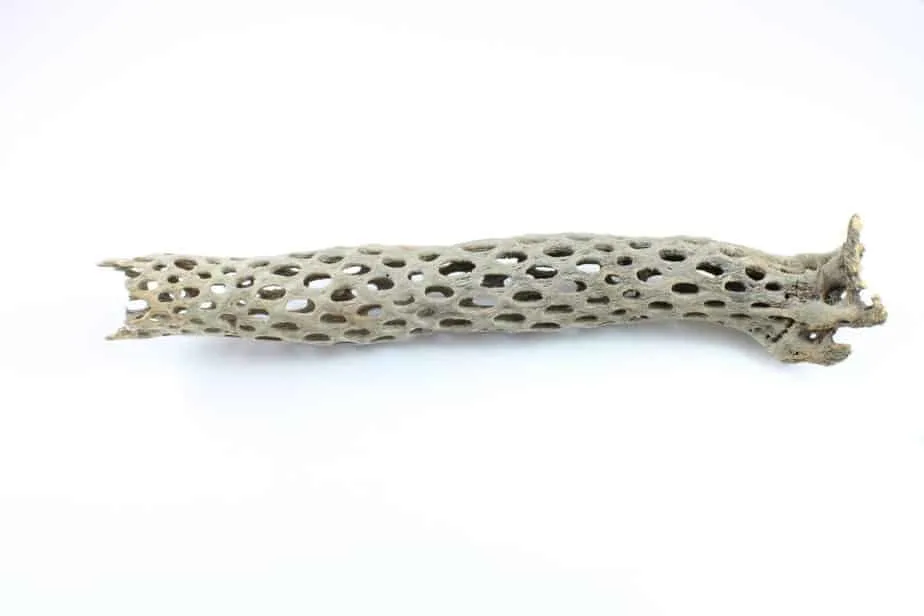
Cholla Driftwood is a beautifully designed and styled driftwood which is difficult to obtain because it is expensive. With the hole-like structure, it can be differentiated from all other driftwoods. It is native to the Southwest, and as long-lasting driftwood with more solid varieties, it is truly the dried remains of a cactus succulent. It is one of the reliable driftwoods for fresh Shrimp Tanks and has a moderate tannic-acid count.
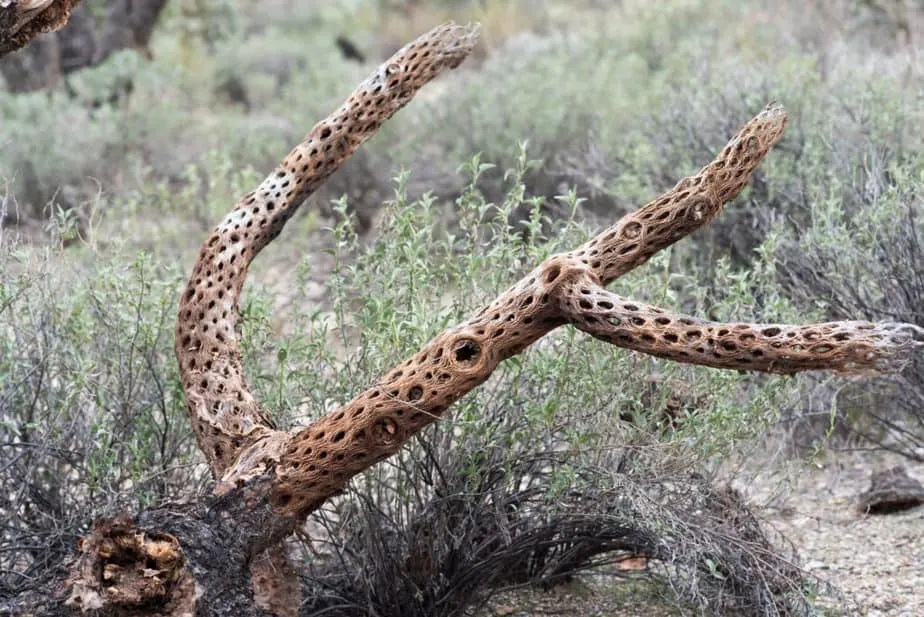
It is difficult to find, so I will advise you to buy it immediately if found at a low price. It takes time to soak. Usually, it takes around two days to sink as it keeps floating in the aquarium. That is why it decays in the aquarium over time. It takes a couple of months or maybe up to two years to be decayed.
3. Mopani Driftwood
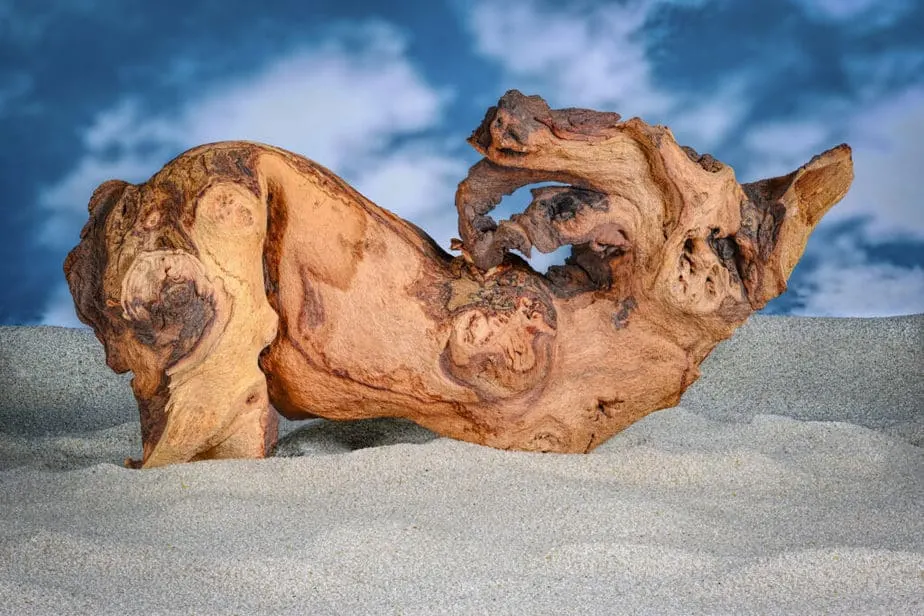
Mopani is a tree in the legume family (Fabaceae) that grows in hot, dry, low-lying areas and comprises two-tone color mixtures. It lowers hydrogen ion concentration and gives a high phenol count. It is changing into a well-liked wood for marine museums as larger aquarium brands are commencing to sell it in their stores. It is a Sub-Sahara tree by structure, which makes it readily available in the wood-market. There are several uses of this driftwood such as aquariums, household material, and music instruments.
Mopani driftwood has a thick structure with dark knots. It is an excellent grained wood with all sorts of fascinating nooks for fish to hide in and live plants to attach. It also has unique colors with a two-toned pattern. It altered the chemistry of water over time and moderating pH towards acidity. That is why Mopani driftwood is considered the perfect driftwood for Raincoast and biome tanks.
4. Spider Driftwood
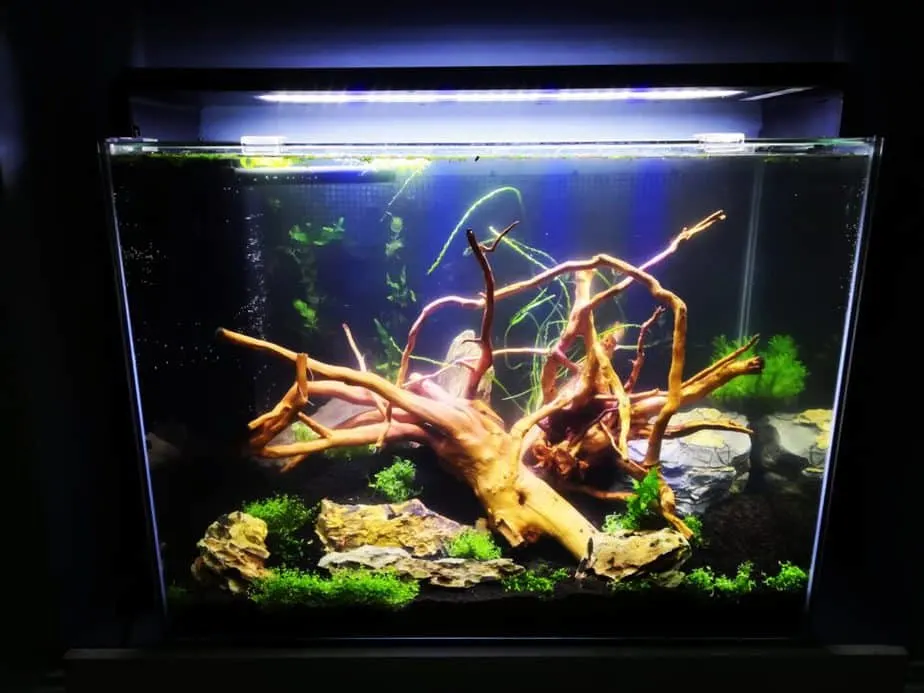
Spider driftwood is documented for its varied branched look. It is found in Mongolia, and it resembles a dead spider, hence the name. It maintains a beautiful Mahogany color in the fish tank.
Spider Driftwood is from Spider Wood and is considered a softwood because it remains evergreen during its lifetime, which leads to a fast-growing plant that will result in material that’s lighter than many other aquarium driftwoods, and eventually always available at a cheaper price when compared with others.
It also becomes an excellent food source for Panaque and Ancistrus plecos. Due to its softness, it decays rapidly than other driftwoods.
After decaying, a dense core network of the spider driftwood remains. It has the second most eye-catching visual impact, after Bonsai driftwood. Most spider driftwood looks ravishingly pleasant under intense aquarium lighting along with plants, substrates, and background. It has a graceful branching structure, and these branches are magnificent for the canopy of a tree. Spider driftwood takes some time to soak in the water before it sinks completely.
5. Tiger Driftwood
Tiger driftwood derived its name from its form. It is similar to the stripes and claws of a tiger and has a pale look and options a branched look that is thicker than most branch-sort wood. They are generally situated in solely, and they are a kind of wood that is true for attaching ferns and mosses. It is a light-weight quantity of tannins and might get soggy quickly. It is another most refined type of driftwood used in freshwater aquariums.
It has a tree-like growth, which makes it versatile by its look. It will take around three weeks to sink in water, so, it advisable to pre-soak before placing it into the aquarium.
6. Manzanita Driftwood
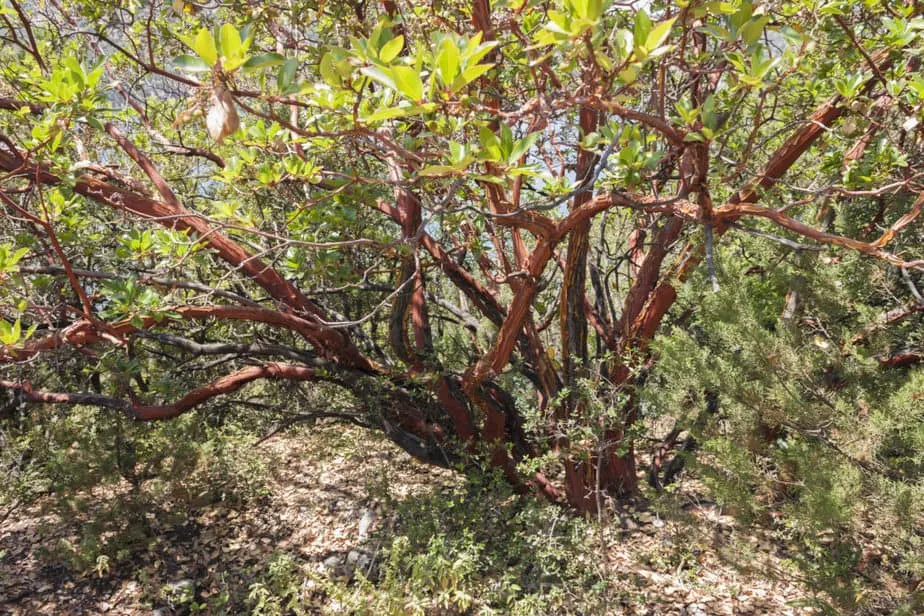
Manzanita driftwood is changing into an extremely desired freshwater tank wood for aquascapers. It is a wood that comes from shrubs and has several benefits over different types of wood. Manzanita driftwood is an occasional phenol count and seems superb with its branch-like structure that creates distinctive wanting scapes. Its waterlogs are the quickest among all different wood offered.
It is available in every driftwood you may purchase with a neutral pH level. It requires no pH level amendment and is also a giant game-changer for those who need wood; however, some fish are not compatible with lower pHs. It is extremely proof against decomposition, which makes it durable and rugged.
7. Saba Driftwood
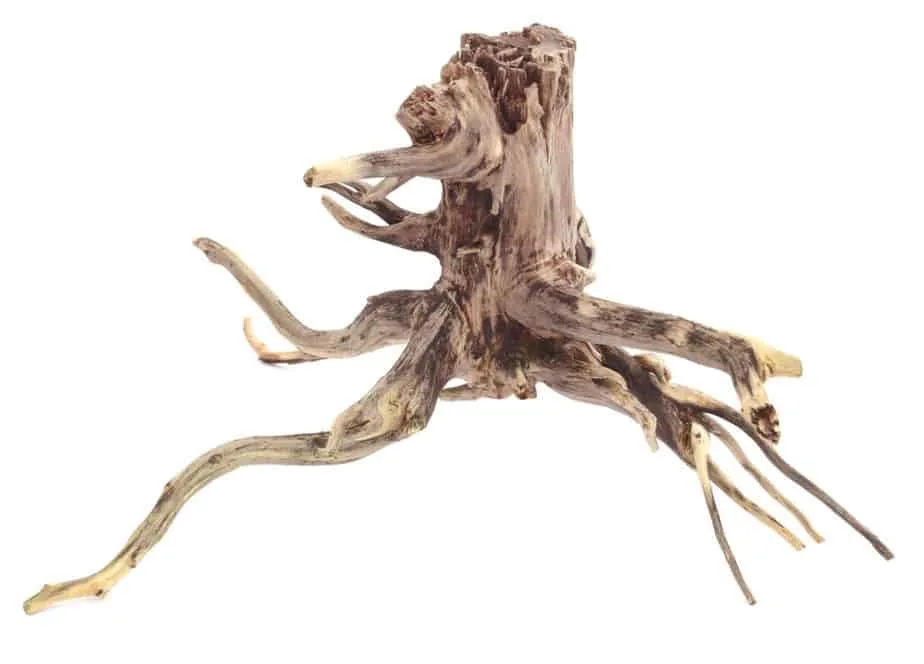
Saba driftwood is intense and comes in deep brown color with a smooth and fine finishing that makes it look like a horn’s texture. Additionally, it has a dazzling structure that looks like a stump with some branches and can easily be found in stores.
Aquarium Driftwood and Tannins
Tannins area unit is a natural compound, contained in driftwood. They are discharged into your freshwater tank as a result of the wood soaks. Once the tannins area unit is discharged into your tank, the compound can discolor your water.
It looks like the sunshine yellow color at low levels, and at high concentrations, it’s going to seem like the color of a tea. Tannins can not harm your fish, but the sight isn’t pleasing to the eye.
Where to buy Aquarium Driftwood?
Aquarium driftwood is available in the following sources:
- Pet Stores: Pet and aquarium stores all over the world contain all variety of driftwood. Make sure you make a complete research about the wood you are going to buy for your aquarium. Mostly, the wood that looks fine and non-toxic in the air can be toxic when submerged in water.
- Online: The best way to buy wood, when it comes to diversity, is through the internet. You can choose the exact piece of driftwood you need. Online stores are outlets for aquarium retailers to showcase the variety of driftwoods they have with photos. However, it may attract extra charges for the delivery.
- Out in Nature: What would be best when you find the original and exact piece of wood out in nature by yourself. If you live near lakes, rivers, or oceans, driftwood may be found along the shoreline. Natural pieces are well polished and attractive due to its original look. But the bigger challenge is being able to identify and recognize the driftwood.
Not all woods are suitable for aquariums as some are toxic and can kill your tank’s species. Be sure about the area as well; you won’t be able to collect the driftwood pieces from private property.
Final Tips Concerning Driftwood
Aquarium driftwood comes in different types and variety with several budgets and appreciative. As they come in different types, only three types of driftwood can be placed in any aquarium along with rocks and plants. There is a lot of things to be learned for fish-tanking and aquascaping, which makes it more of a trial and mistakes, so, you have to make your hands dirty if you want to create something unique.
For a trial, pick any piece of wood from your garden or backyard and experiment it with various rocks and plants; you will definitely learn a lot of stuff within the self-teaching process. I hope this article is quite useful and helpful for the experts as well as the beginners.
